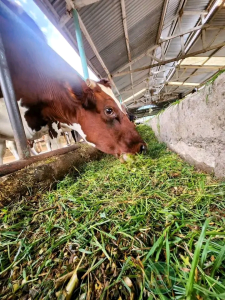Crop production
3. Types of weeds
3.1. Weeds control
Effective weed control involves a combination of strategies, as no single method works perfectly for all situations. Here's a breakdown of common weed control methods:
1. Prevention:
* Healthy Plants:
* A dense, healthy lawn or garden naturally outcompetes weeds. Proper watering, fertilization, and appropriate planting densities are key.
* Clean Seeds and Soil:
* Use certified weed-free seeds and compost to prevent introducing new weeds.
* Mulching:
* Mulch (organic or inorganic) blocks sunlight, inhibiting weed seed germination.
2. Cultural Control:
* Hand-Weeding:
* Effective for small areas and young weeds. Remove the entire root system to prevent regrowth.
* Cultivation:
* Tilling or hoeing disrupts weed growth, especially for young seedlings.
* Mowing:
* Regular mowing prevents weeds from producing seeds.
* Cover Crops:
* Planting cover crops smothers weeds and improves soil health.
3. Chemical Control (Herbicides):
* Pre-Emergent Herbicides:
* Applied before weeds germinate, preventing them from sprouting.
* Post-Emergent Herbicides:
* Applied to existing weeds, targeting actively growing plants.
* It is very important to follow the directions on all herbicide labels.
* Selective herbicides target specific weed types, while non-selective herbicides affect most vegetation.
4. Biological Control:
* Introducing natural enemies (insects, fungi, etc.) to control specific weed species. This method requires careful consideration to ensure it doesn't harm other plants.
Key Considerations:
* Weed Identification: Correctly identifying the weed is essential for choosing the most effective control method.
* Timing: Controlling weeds when they are young is generally more effective.
* Integrated Approach: Combining multiple methods is often the most successful strategy.
* Environmental Impact: Consider the environmental impact of your chosen method, especially when using herbicides.
